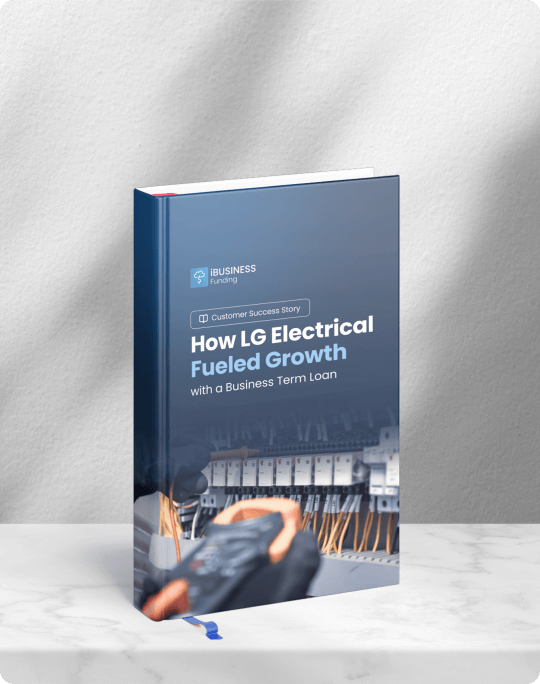
What SBA Data Tells Us About Rural vs. Urban Lending Trends and Opportunities
Small business lending is essential to fueling economic growth, from booming metropolitan areas to quiet small towns. While we often picture a growing, impactful small business as the always-crowded coffee shop in a city’s center, we may overlook the important role of rural businesses and their need for capital to drive their influence in their community.
Below, we used data from the Small Business Administration (SBA)* and Federal Reserve to examine trends in rural and urban areas with the aim of identifying lending opportunities and examining how lending shapes these locations.
The Rural vs. Urban Lending Landscape
The SBA classifies businesses as rural or urban based on their location and Metropolitan Statistical Area (MSA) assigned by the Office of Management and Budget. We've distinguished rural from urban small businesses in our analysis based on these MSA codes.
With that in mind, about 15% of small businesses in the U.S. are in counties categorized as rural areas, according to data from Fed Small Business. Those small businesses are essential to their communities, making up 85% of rural counties' total businesses and employing 54% of all workers in these areas, as reported by the SBA’s Office of Advocacy.
This impact is powered by the ability to secure sufficient funding. While urban businesses tend to rely on larger banks for financial services, rural businesses are more likely to turn to small community banks. But that doesn’t make their needs or qualifications small when it comes to capital.
Small Business Credit Survey (SBCS) reports from the last two years show that rural businesses were more likely to apply for traditional financing than urban businesses and more likely to be approved. According to the 2025 SBCS Chartbook on Rural and Urban Firms, 59% of rural small businesses that sought traditional financing were fully approved, compared to 50% of urban businesses.
While it’s easy to see the impact of urban businesses in metropolitan areas, thriving, well-funded businesses are just as important if not more so in rural areas to boost economic impact and provide jobs given their footprint.
Today’s Urban Borrower
Using the latest SBA data, let’s look at borrowing behaviors and lending trends among urban businesses today.
First, we can see that the top industries approved for loans from FY2023 through Q3 of FY2025 in urban areas include restaurants, trade-related home services, and freight trucking, the latter of which reflects urban commercial shipping needs.
%20Approval%20Amounts%20(%24)%20for%20Veterans.png)
The data also shows us that urban small businesses take out 43% fewer loans than rural businesses, with smaller loan amounts as well. This could indicate more diverse funding sources than traditional lending, such as private investors or venture capital, or revenue levels that lessen the need for borrowing in general. We can also see that urban small businesses make less of an impact on local job creation than rural businesses, which is likely due to the prevalence of job opportunities within large corporations in urban areas.
.png)
Today’s Rural Borrower
SBA FOIA data shows the top industries approved for loans from FY2023 through Q3 of FY2025 in rural counties are similar to those in urban locations, with the addition of fitness and recreation centers—all industries that help build and bring together communities in these areas.
.png)
In total, businesses classified as rural have been approved for 100,314 loans since 2023, representing $47.7B in approved capital and 1,046,343 jobs supported to help strengthen businesses and communities in these areas.
Rural business owners are borrowing more per loan on average than urban owners—roughly $476,000 compared to $425,000—suggesting greater capital needs. This could be due to less access to alternative funding sources in rural areas, such as venture capital or private equity opportunities. Infrastructure or operational costs may also be higher in rural settings due to supply chain, transportation, or service access costs.
The 2025 Chartbook on Rural and Urban Firms highlights a difference in race and gender diversity among business owners as well. In 2024, 92% of rural businesses had white owners, while Black ownership was at 1%, Hispanic at 2%, and Asian at 4%. Just 22% were owned by women.
Opportunities for SBA Lenders
Data representing how rural small business owners are borrowing more and supporting more jobs within their communities combined with the implication that urban borrowers may be turning more to non-traditional lending sources indicates the need for continued or increased SBA support to fuel rural economic development. It’s clear rural businesses in particular are relying on SBA lending to achieve their businesses’ potential and make an impact in their communities.
Below, we take a look at what SBA lenders may want to keep in mind when developing lending strategies.
Rural vs. Urban Small Business Myths
Data shows that rural businesses are growing right alongside urban businesses. The 2025 Chartbook on Rural and Urban Firms shows that more rural businesses applied for financing over the prior year, with owners indicating their needs to meet operating expenses or expand their businesses as the top two reasons for seeking funding.
Other data points from this report show that in 2024:
- 37% of rural small businesses increased their revenue, just 1% behind urban small businesses
- 25% of rural small businesses increased employment, just 2% behind urban
- 41% operated at a profit, not far behind urban businesses at 47%
Despite being smaller in size on average and serving a smaller population, rural small businesses on the whole are strong, profitable, and reliable for lenders to invest in.
Location-Tailored Lending Programs and Incentives
Sources of capital and funding preferences also differ between rural and urban businesses, informing how lenders, government programs, and community organizations can better serve these regions.
The Chartbook on Rural and Urban Firms shows that the majority (60%) of rural businesses turn to small banks for funding as compared to 41% of urban businesses. Roughly 37% of rural businesses look to large banks for funding, versus 56% of urban businesses. Rural businesses enlist the help of more credit unions, while urban businesses utilize more financial companies that aren’t banks.
These borrowing patterns help shape targeted lending strategies based on location.
For rural borrowers:
- Underserved markets mean less competition for lenders, providing an opportunity for deeper relationships and higher loan conversion rates.
- Community banks and Community Development Financial Institutions (CDFIs) have a critical role to play in providing flexible capital and local support.
- Programs such as USDA Business & Industry Loans and Rural Microentrepreneur Assistance Programs offer additional incentives and federal support.
For urban borrowers:
- Urban communities tend to include more tech startups, minority-owned businesses, and green ventures, aligning with SBA and private sector diversity goals.
- Higher population density leads to greater loan volume and more repeat borrowers, ideal for lenders seeking scalable growth.
- There’s a strong potential for partnerships with economic development organizations, local Chambers of Commerce, and city governments focused on revitalization and entrepreneurship.
These location-based lending behaviors offer critical insights for lenders, policymakers, and community stakeholders looking to expand access to capital and drive economic impact across diverse U.S. communities.
Outreach for Rural and Urban Borrowers
A report from the Federal Reserve Bank of Richmond highlights how much relationships matter when choosing a funding source. The report shows that 81% of rural businesses cited an existing relationship with a bank as the reason for applying for funding at that location as opposed to 66% of urban businesses that claimed the same.
The importance of outreach and engagement when it comes to attracting first-time and repeat borrowers can’t be overemphasized. While efforts to build these relationships show a higher impact in rural communities, they should be a priority regardless of your location.
- Target outreach around the specific programs, funding, and resources available to small businesses in your region.
- Partner with local organizations such as Chambers of Commerce, Small Business Development Centers (SBDCs), Veteran Business Outreach Centers, and nonprofit economic development groups.
- Stay closely connected to the local business community to understand their evolving needs, challenges, and growth opportunities.
- Invest in building long-term relationships, especially in rural areas where trust and reputation are often the driving forces behind lender choice.
Final Thoughts
Lenders are in a key position to balance opportunity for all borrowers. Facilitating business development and growth across the country leads to a positive economic impact at both micro and macro levels.
The ability to support small business owners, no matter where they are, depends on having the right tools to provide a quick, smart, and efficient lending experience—one that makes borrowers come back when they’re ready to take the next step in growing their business. LenderAI helps SBA lending teams streamline their loan origination process from end to end, supporting both lenders and borrowers as they invest in community growth.
*SBA data is accurate as of August 2025.











.png)
.png)
.png)



.svg)